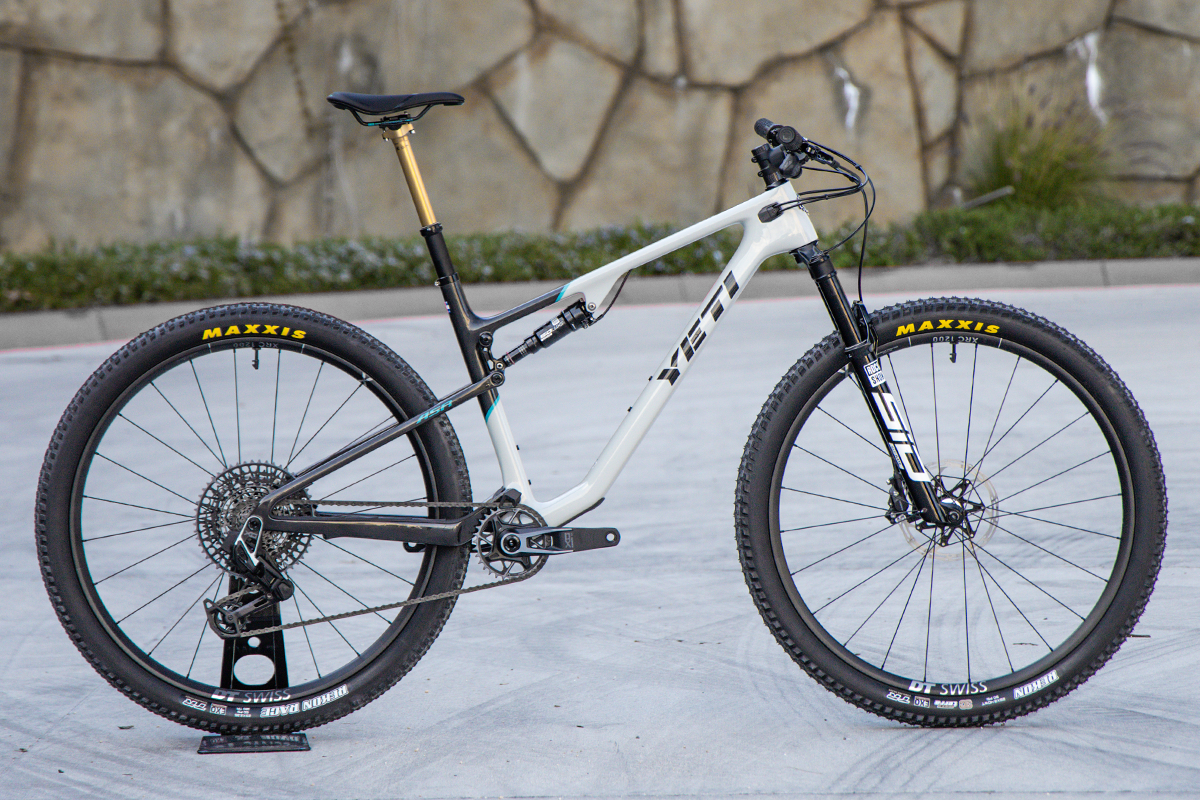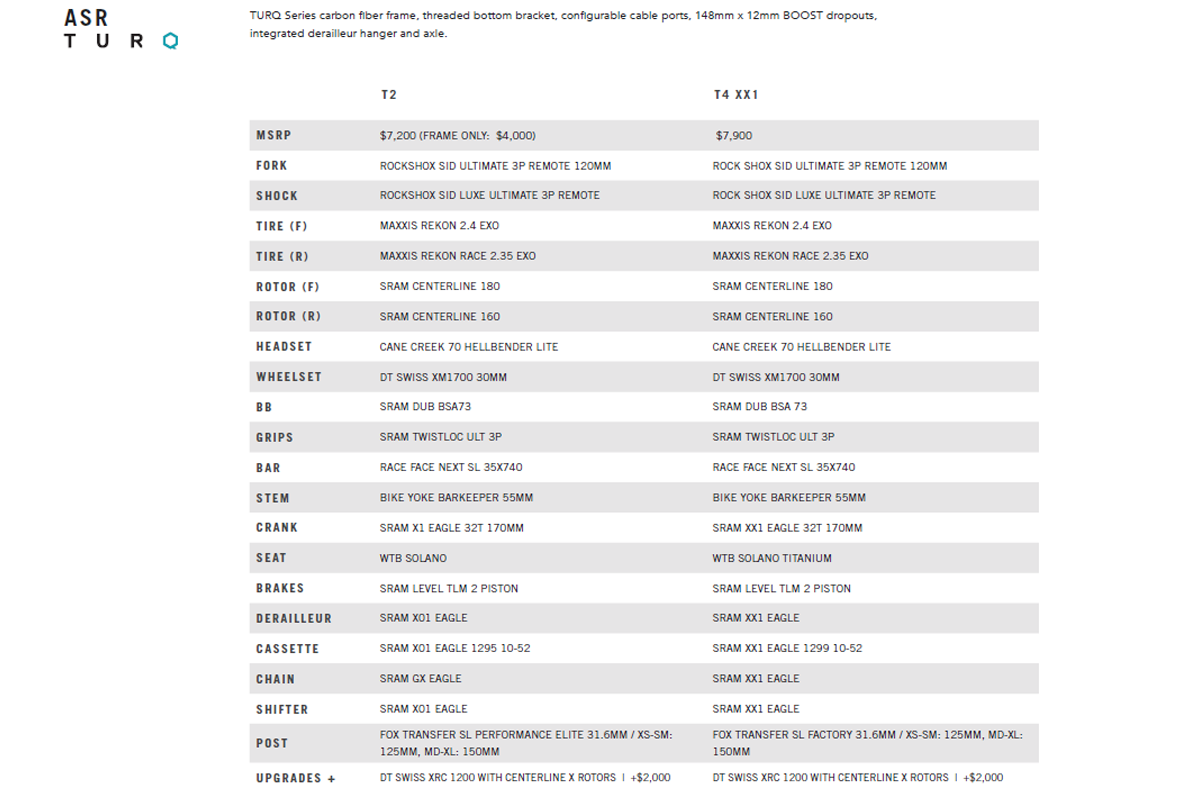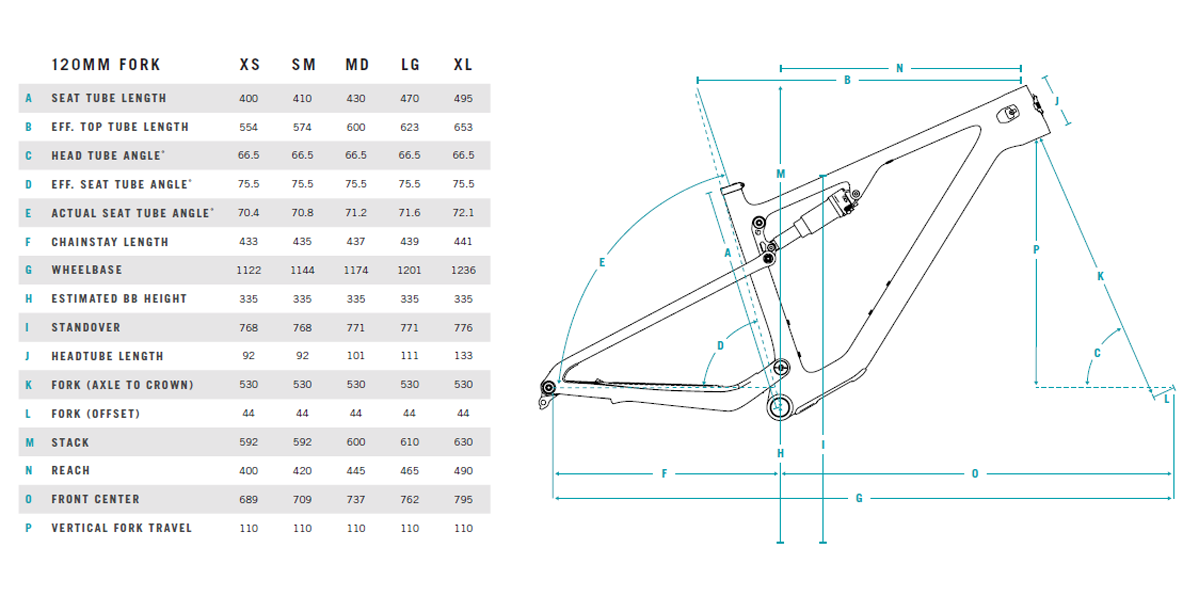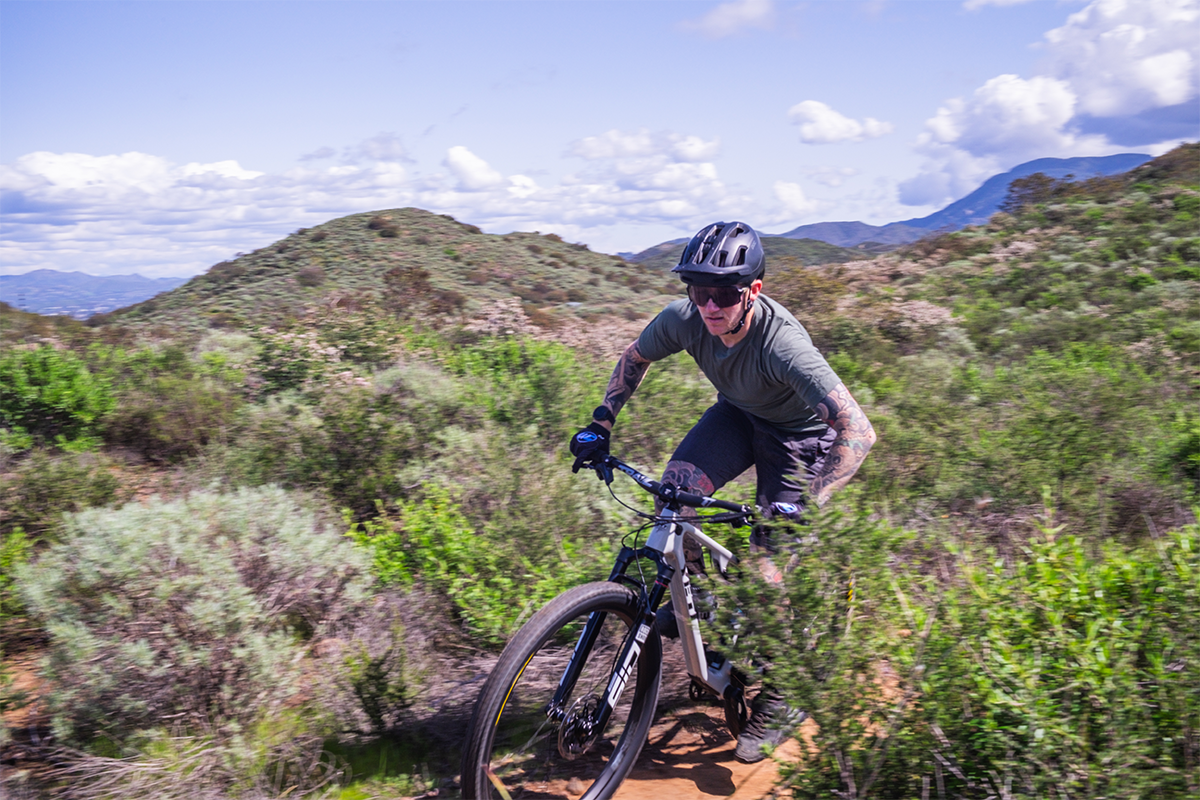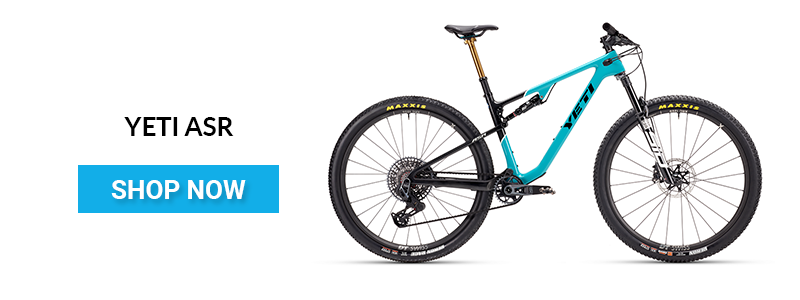- Continue Shopping
- Your Cart is Empty
Yeti ASR - (NEW) A Decade Later & A Whole Lot XC Better! [Video]
Words by: Liam Woods
Is This The Best Modern XC Bike?
It’s been a long time since Yeti has offered a full blown xc bike, about a decade to be exact. The Yeti ASR went away from the lineup around 2017 and was first released in 2014/2015. Today the Yeti ASR is back with a vengeance, meaner, leaner, and as modern as this new breed of cross-country mountain bikes get. With 115mm of rear flex stay suspension paired with a 120mm fork, this modern xc bike is ready for its debut at a World Cup in spandex, or ripping around your local trails as fast as possible.
Some might say Yeti has had short travel bikes like the SB100 and SB115, but I would argue those were a different style of short travel bike. A much stiffer and heavier frame put it into the mini trail category instead of a lightweight machine made for going up as much as coming down. SB100s could get down to 25-ish pounds with a pretty high end and lightweight build, while our test ASR T3 with DT Swiss XRC 1200 carbon wheels weighs 23lbs 5oz without pedals!
Yeti has come back to the ASR with a lot of bold claims. It's the lightest full suspension bike Yeti has ever made as a result of their most extensive carbon project. The engineers left no leaf unturned to make the new ASR a perfect blend of stiffness and flexibility combined with finely tuned suspension kinematics. Personally, when I first heard about this bike I was quite excited, and without knowing any details at the time, the bike ended up being exactly what I was hoping for.
What's new?
I would go as far to say everything is new and improved on the new ASR over the old ASR. 10 years in the bike industry is a very long time, the carbon tech a decade ago might as well be ancient history. Bikes are lighter, carbon is more refined, standards have changed and most importantly geometry has been pushed to the limit and found a sweet spot in this modern era of mountain biking.
Yeti focused on making a great pedaling bike, with a climbing position that is optimized to put down power while being between the wheels for great handling. Believe it or not, when you are pedaling for hours at a time and trying to go fast, a 78 degree straight up seat tube isn't actually comfortable, those just help pedal 35 lbs enduro rigs up the hill slowly. Combine that with a longer reach to put you over the front end and a bb height that is low enough to rail corners but high enough to pedal through tech sections of trail, and on paper the ASR seems to be exactly what a modern xc racer needs.
Yeti calls for 30% sag which many xc racers would roll their eyes at, but if tuned correctly more sag helps smooth out the trail. A 10% progression ratio and a 40mm shock stoke allow for the bike to ramp up enough to not bottom out on every bump, but also allow you to get full use of the 115mm of travel without it feeling harsh.
As mentioned above, carbon technology has come a very long way, and is extremely important to nail the desired stiffness on a bike like this. Yeti has made size specific stiffness a top priority for the ASR, along with reducing the amount of extra carbon on the frame reducing weight. If you are baller enough, you can get an even more optimized frame with the T5 Ultimate build, which comes with full SRAM AXS and Rockshox Flight Attendant, being that everything is wireless the Ultimate frame comes with only a rear brake cable port, no cable ports for a dropper post, shifter or remote lockouts. This along with paint saves over 100g on frame weight alone.
This bike has some other nice features like the integrated chain guide - when you are pushing a bike hard it's nice to have that extra security on the frame. There is also room for 2 water bottles inside the main frame! There is clearance for 2.4 tires in the rear with lots of integrated frame protection found on the chainstay, downtube, and on the rear chainstay/seatstay area to keep debris out.
Specs:
- 66.5 - degree head tube angle
- 75.5 - degree seat tube angle
- 115mm rear travel paired with a 120mm fork
- Sizes XS-XL
- Suspension lockout frame routing
- Optional custom chain guide
- Threaded BB
- SRAM UDH
- 28-36t Max (38t MD-XL) chainring compatibility
- 2.4 Rear tire clearance
- Configurable cable routing ports
- 2 main frame waterbottles
- Ample frame protection
- Integrated rear mud fender
- 1,552g (Frame No shock) 1830g (Frame and shock)
- 1,448g (Ultimate Frame No shock) 1813g (Ultimate Frame and shock)
Geometry:
The geometry of short travel bikes can make or break them, and I'd argue that geometry is even more important with less travel as a too steep head tube angle or an imbalance between the front and rear is much more noticeable without the extra travel to hide those flaws. The ASR gets a 66.5 degree head tube angle with a 120mm fork with a 75.5 degree seat tube angle. There are size specific chainstays with a medium getting a 437mm and a large at 439mm, all other models have a 2mm jump in either direction based on the frame size. Reach is 445 for a medium and 465 for a large, making it not extremely long but right in line for an xc bike where you might run a 50-70mm stem.
On Trail Performance:
As I said before, I was super stoked when I heard about this bike. For the last few years I've really been focused on not only riding bikes that I can go uphill efficiently but also handle just about any downhill out there. That goes into some races I like to do, specifically the Downieville Classic where you're always balancing how fast can you climb while how fast can you descend, with your bike still in 1 piece at the finish line. I've previously owned and raced at Downieville many Yeti bikes; Yeti ASR C (2016 model), Yeti SB4.5, and Yeti SB120, with the SB120 being my most recent Yeti build for this specific application. So with the new ASR, I had high hopes, as the original ASR was really damn good and I would say way ahead of its time, but it was a bit too flexy when pushing hard on downhills. The SB4.5 was actually a good balance yet lacked an in frame water bottle, but remains one of my all time favorite bikes. The SB120 I felt leaned more towards the mini trail bike setup vs a capable xc bike. My race bike weighed 26.5 lbs ready to go with some extremely light components, and there’s no getting around the frame weight that rode extremely well downhill but comes with that 2+ lbs weight penalty over the new ASR.
Setup:
When I first got the Yeti ASR and built it up, I was almost jaw dropped. I have seen the geometry chart and thought maybe this is also a mini trail bike, but when it topped the scales at 23.5 lbs without pedals, my hope was reignited. With the first setup, I got sag at 30% and set up my SID fork to what I already have my Revel Ranger setup at. One thing that I'm not a fan of is the twist lock remote lockout. I'm not a fan of the lockouts generally, but mostly what I dislike about the twist lock is that you have to run push on grips that are not my preferred design. All T-series builds come with RockShox Ultimate Suspension with remote lockouts, the C-series builds come with RockShox Select suspension with crown adjustment, and an option to upgrade to the Ultimate suspension with remote lockouts.
With my first ride, I had it completely stock, and while I also ride a 55mm stem and 740mm bars as this bike coincidentally comes, I didn't feel completely comfortable on it. I swapped the bar and stem out for a 40mm stem and 760mm bar as Jared also had the same feeling. The bike then felt much more comfortable and I could get a feel for the bike without having the weird cockpit feeling. After a few rides and small dialing in of the suspension, mainly slowing down the rear rebound, I put my personal 55mm stem and 740mm cockpit from my Ranger on the ASR. For whatever reason, the bar roll and setup felt much more comfortable, although there was still no getting around the stock RockShox grips for the twist lock.
First Impressions:
The ASR right away feels very lively and fast, and after a few pedal strokes, you want to keep pushing it. I wanted to get some good climbing on it in open mode, to see how it really pedals. It has pretty good traction on steep terrain and I’d say the limit was the stock Rekon Race rear tire which breaks loose pretty easily. There is some noticeable pedal bob in the open mode and most or all of that goes away when you put it into the middle suspension setting. Of course when you lock it out, it's road bike stiff but really only useful on road sections or extremely smooth dirt roads.
The seated position is just right, I'd go as far as to say it's perfect. I can run the saddle about in the middle of the rails, my knees are not too far forward or back, I'm not sitting on the nose of the saddle to keep the front down, and my weight distribution is balanced between both wheels. On an XC bike you are often pedaling through sections like flat corners or mellow terrain while still maneuvering the bike, and this weight balance is crucial. You can get some predictable tire drift without pushing the front end out. I was riding a size Large and I typically find a 470mm reach to be my sweet spot. 5mm shorter combined with the seated position I could probably run a 60mm stem for most xc riding on this bike. The 55mm stem I think is a great balance for a bike of this style, and going shorter can make it feel more like a trail bike if that is what you prefer.
Once you get this bike to the top, and I might add very quickly without any extra effort, some of the same traits are found. The bike feels really light and nimble, which can be good or bad when going downhill. It sure exudes an XC bike feeling, you can switch up your line in a heartbeat, throw it around easily and it flies into the air without effort. However, it can also feel a bit skippy in the rear end being so light and not giving the most amount of traction if you compare this to the SB120 or Revel Ranger. However, the ASR is 2 lbs lighter than both of those bikes, so take what you want from that comparison. I think some of this will also come down to the Rekon Race rear tire, which isn't my favorite xc tire. I much prefer an Aspen (yes, I know) or an Ikon.
The use of the rear travel is excellent, I was able to push this bike pretty hard, pull up for some fun gaps, and ride some of the steeper trails we have around here. I would actually say the major part holding this bike back on downhill capability is the 2 piston brakes, the geometry is so good and allows you to push the bike that I found myself not having enough brakes that I am used to. Some 4 piston brakes and even bumping up the 160mm rear rotor to 180mm would improve the bike's downhill performance a lot.
The whole system worked really well together, the geometry paired with the weight makes this one of, if not the best modern xc bike I have ridden.
Differences? (Old ASR & Yeti Sb120)
The old ASR had many similarities in design to the new ASR. 120mm fork, flex stay rear suspension, and at the time progressive geometry. It's been a few years, 6 to be exact since I ride that old ASR, but I remember it pretty fondly. And what I remember is the frame twisting down the Downieville Classic downhill trying to push it through the rough Butcher trail. The new ASR is much stiffer than that and more planted, allowing you to really have confidence when getting into rough terrain.
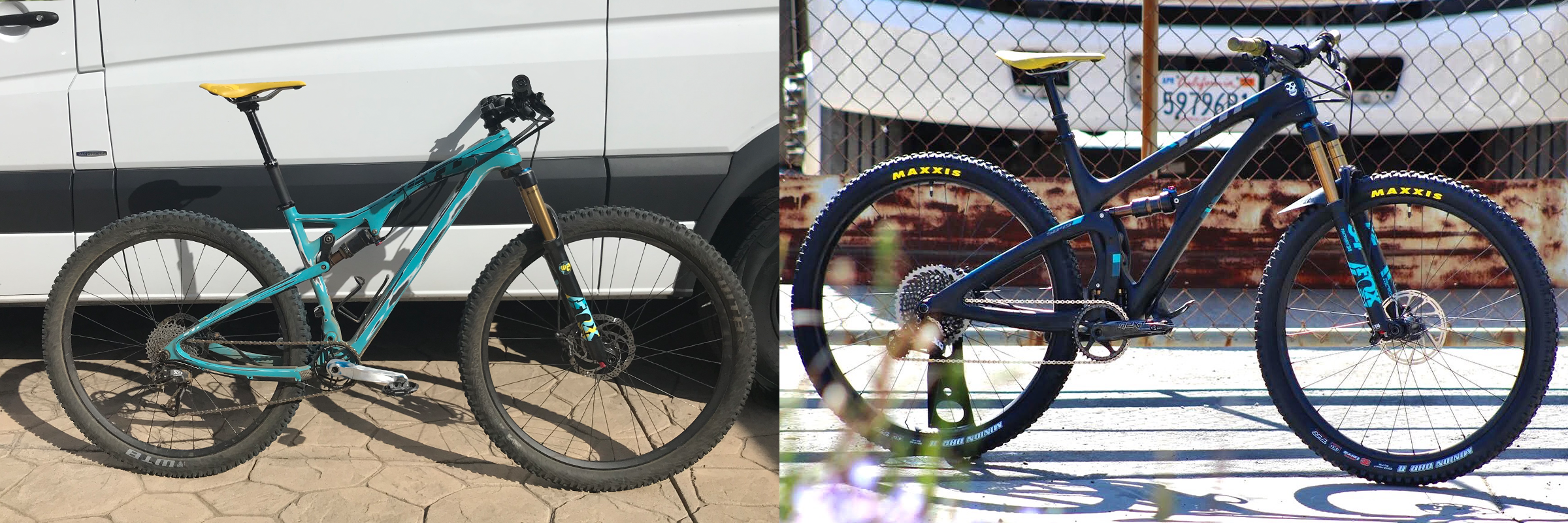
Old Yeti ASR 2016 (Left), Yeti SB4.5 (Right)
Almost the opposite can be said from the SB120 to the new ASR, the SB120 frame is stiffer, the suspension feels more planted, and overall the bike rides like a mini trail bike. The ASR has a good balance of frame stiffness while being comfortable and smooth riding.

Yeti SB120 (Left), Yeti ASR 2024 (Right)
What's Worldwide's Takeaway?
After a decade, the new Yeti ASR is back and ready to rip off legs at the local xc race, or on the world stage. With 120mm of front travel, and 115mm of flex stay rear travel, the ASR is not only light on the scales but it's equally confident on the downhills. Yeti left nothing to spare on this bike, from cutting down any redundant carbon on the layup process, to saving weight on hardware and frame axles, and even offering a lighter wireless only option with the T5 Ultimate build. My hopes were met with a well packaged xc bike ready to tackle all day trail riding and even be my first pick for any cross country mountain bike race I plan on going to this year. It can climb with the best and descend better than any other xc bike out there. Leave it up to Yeti to come back 10 years later with a mic drop…
This article was written / authored by Liam Woods. Liam has been in the bicycle industry for over 10 years as a racer, professional mechanic, service manager and as of late, media and content creator. Liam has ridden thousands of different bikes, ridden countless components, tested endless MTB apparel of all kinds and written reviews on it all. He's a key piece to the Worldwide Cyclery "All Things MTB" content creation puzzle. He also makes consistent appearances on the Worldwide Cyclery YouTube channel and Instagram.

